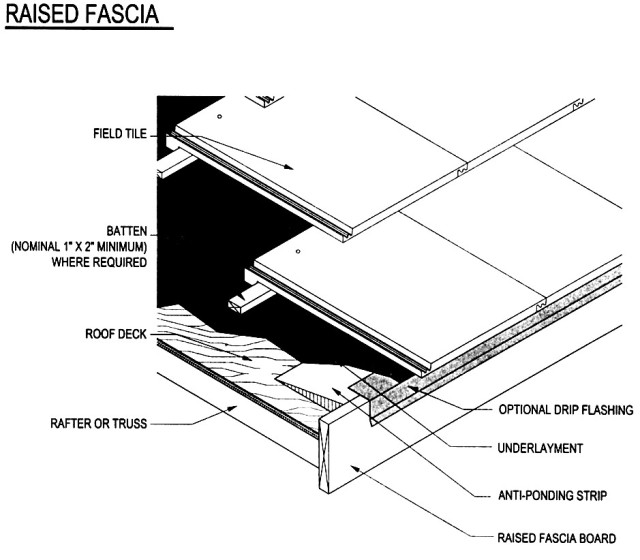Tile roofs have been routinely installed on homes since the 1980’s. Sometimes a home inspection report contains a notation that “an anti-ponding provision is missing at the tile roof perimeter”. For most people this comment makes no sense at all. Therefore, let this article provide the information you need for clarification.
A tile roof has the exposed tile serving as the primary rain barrier but it also has an underlying material called underlayment. In most cases the underlayment is a 30 lb. felt (weighing 30 pounds per square which is 100 sq.ft.). The job of the underlayment is to direct flow from any incidental water that penetrates the tile from wind driven rain or from broken tile and imperfect flashing. Of course water flows downhill so when water lands on the underlayment it is directed downward toward the eaves.

The first course (row) of tile installed at the eave is not resting on tile below it since it is at the edge. It only has the fascia to rest on at the edge so the fascia or a trim piece gets installed higher than the underlayment so that the first row edge that you see is not dipped down. This creates an area where the underlayment ends that will pond water. When ponding occurs in this area it can severely deteriorate the wood at the perimeter. Therefore, a new eave detail was designed to fix the ponding problem.
The fix involves installing a metal drip flashing or a foam anti-ponding strip at the roof perimeter that prevents water from ponding at the raised fascia area. See the illustration below. Many older homes with tile roofs were built without this provision. When wood decay is found at the perimeter of the eaves and an anti-ponding strip/metal flashing is missing, the correction is to fix the wood damage and/or install an anti-ponding strip at the perimeter. Now you know.
since 1988.
Give us a call at (602) 864-8331 to order an inspection or get FREE advice.
